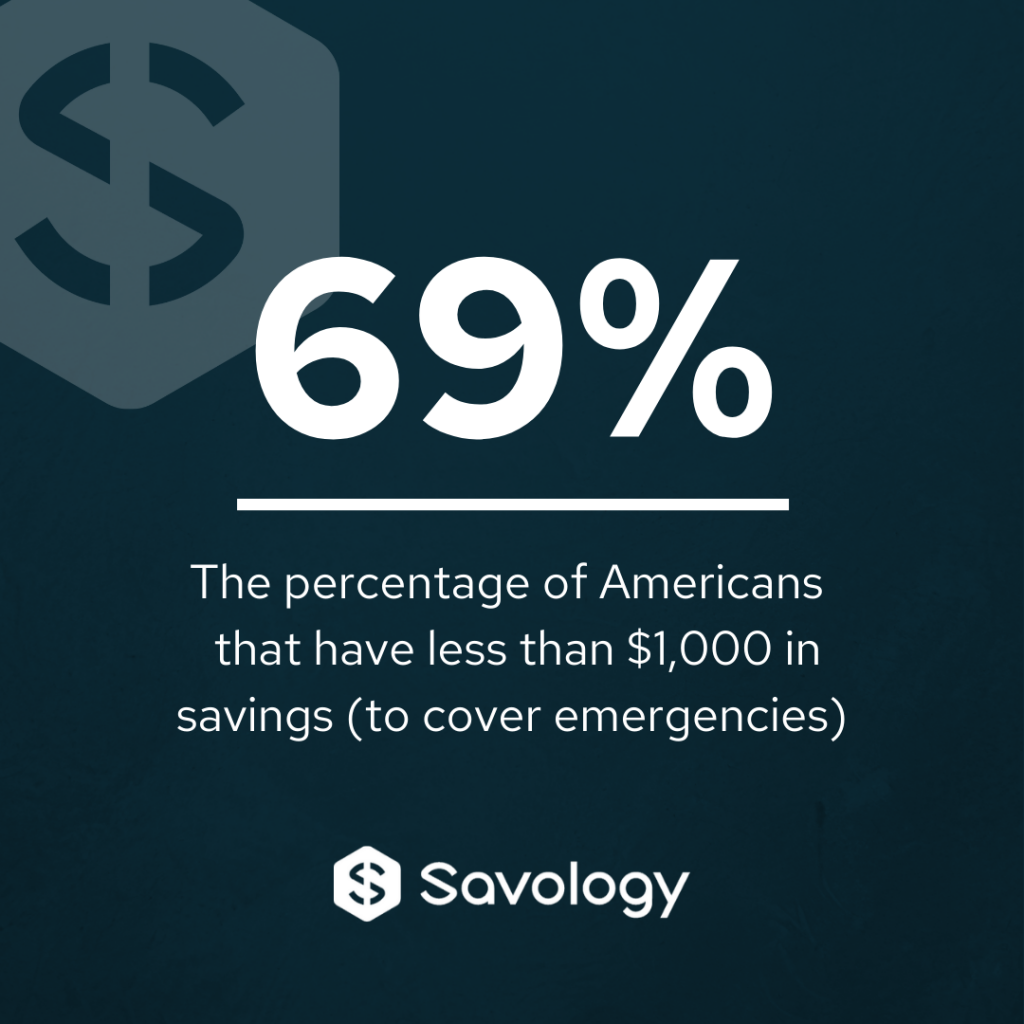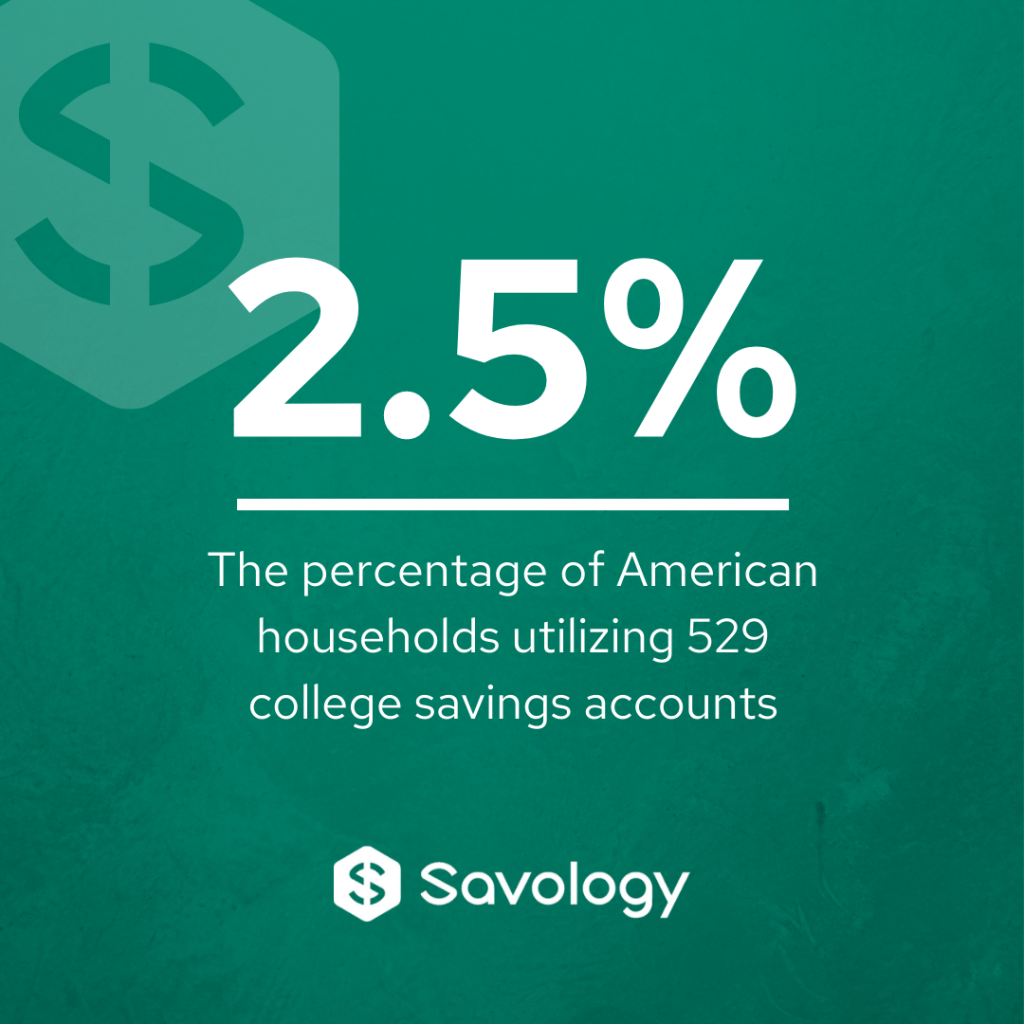Many Americans are struggling with their personal finances.
I wish it wasn’t true, but it certainly looks like it is.
It’s something that needs to be taken seriously and not sugar-coated.
The more we brush off and neglect the state of household finances, the worse the problem becomes.
If you’re not in a financially challenging situation, there’s a good chance that you know someone who is struggling to pay their bills, struggling to increase their income and get ahead.
The difference between those struggling and those in a financially secure position primarily comes down to a few things: Planning, resourcefulness, and literacy.
Unfortunately, the majority of Americans remain uncertain about where to start with all three of those things.
To paint a very clear picture of the lack of literacy, and the unfortunate state that households are finding themselves in, we decided to put together a list of key statistics that highlight the severity of the issue.
Below are 13 personal finance stats that demonstrate the current state of personal finances across the country.
95% of millennials are saving less than the recommended amount
Source: National Institute on Retirement Security (NIRS)
In your early years of saving, especially in your 20’s, this might not seem significant. But don’t let that fool you for one minute.
The amount you are currently saving has a direct impact on your financial success, and notably on your projected retirement age.
This means that 95% of millennials will be stuck doing one of three things:
1) Putting strain on the lifestyle they’ll have closer to their desired retirement age; or
2) Reducing their standard of living through their retirement years; or
3) Pushing back their retirement age altogether.
In the very worst case scenario, it may come to a combination of all three.
This is why it’s so important to invest early, invest often, and pay yourself first.
It is helpful to find out how much you should be saving. Use our free retirement calculator and build your free financial plan right now to find out exactly how much you need to be saving and how you can improve your retirement outlook.
69% of households have less than $1,000 in emergency savings
Source: Associated Press
Numerous sources, including Forbes and the Associated Press, have reported that 69% of households have less than $1,000 in liquid savings as an emergency fund. This number indicates just how serious the current state of personal finance really is across the United States.

It means that the majority of Americans are not saving enough to protect themselves in the case of a financial emergency.
Unfortunately, two of the key takeaways from COVID-19, are that you can never be too prepared, and that there is no such thing as having “too much” in your emergency fund.
34% of all Americans have $0 in savings
Source: CNBC
If you thought the last statistic was bad, this one might be even worse.
34% of all Americans, which is more than 100 million people, have $0 in savings to their name. Can you imagine how stressful that would be?
Just ask yourself these questions: What would happen if you had to cover an unexpected medical bill or if your pet got sick and you had to visit the vet? Or what if your car broke down and you needed to pay for a tow-truck?
The unfortunate answer for most is that they heavily rely on credit card utilization, taking on more debt, and putting themselves in an even worse financial position. Using a debt payoff app can help handle debt and plan for the future.
Emergency funds exist for a reason: to provide self-insurance and mitigate the risks of costs associated with financial emergencies.
Build your free financial plan right now to find out how much you need to be saving for your emergency fund.
66% of millennials have zero retirement savings
Source: National Institute on Retirement Security (NIRS)
Unfortunately, the majority of Americans are living paycheck-to-paycheck. Between covering the necessities and their debt payments, it may seem impossible to start investing.
That’s one side of the equation. The other is this: there is a significant portion of millennials that push back saving and investing for retirement. The main reason? Because they think they have more than enough time ahead of them to start saving.
However, when it comes to planning, saving, and investing for your retirement you can never be too prepared.
The sooner you start, and the more you are saving on a monthly basis, the better off you’ll be.
This is especially important when you consider that we are now living longer, the cost of healthcare continues to rise year over year, pensions are a thing of the past, and the Social Security trust fund is on track to be depleted by 2034 resulting in decreased payments for recipients.
72% of households do not have a written financial plan
Source: Charles Schwab
This means that only 28% of American households currently have a proper financial plan to help them navigate their finances.
Recently, we conducted our own research here at Savology and found that households with a financial plan are 2.5x more likely to save enough for retirement.
So wouldn’t you invest a bit of your time, even just 5 minutes, knowing that you could increase your odds of success by 2.5x?
Start building your free financial plan now.
83% of people that set financial goals feel better about their finances after just one year
Source: Business Wire
Finding motivation when it comes to managing your money can be difficult at times. It’s a defeating task, but when you gain confidence, motivation, and start feeling better about your financial situation, it can have a positive compounding impact.
One of the direct benefits you gain from creating and having a financial plan, through goal setting, is feeling better about your situation. And it makes complete sense. Without a proper plan, you’ll be forced to make really challenging financial decisions without any clarity of guidance. Your plan eliminates the guesswork, gives you confidence, and acts as a motivational factor.
Only 2.5% of households are utilizing 529 college savings accounts
Source: Federal Reserve
It surprised me to learn that a mere 2.5% of households across the entire country are utilizing 529 plans for their children’s education. That is an extremely low number considering how many people are getting a college education.
This means that the vast majority are not taking advantage of the benefits associated with 529 plans. This oftentimes leaves them in challenging positions when it comes to paying for college and other education.
Unfortunately, it means parents are leaving thousands of dollars in benefits on the table, if not even more, but not taking advantage of these plans.
On the other side, it also means there are millions of new grads finishing their degrees with significant student loans and are now looking for debt management options.

84% of millennials are underinsured
Source: Savology
Only 16% of millennials have an adequate amount of insurance in place to properly protect themselves, their financial assets, and their family’s financial plan.
The other 84% are underinsured, which means that 84% are not properly protecting their financial security and their family’s future.
Insurance, especially life insurance, can be considered the black sheep of the financial family. However, it’s one of the most integral components of your plan.
On that note, we were able to determine that 66% of millennials do not have a sufficient amount of life insurance to properly protect their family.
Insurance can be hard to justify for most people, because they may not see the reasoning of why they need it, until it’s too late.
Two very critical things to consider are these First, you’re not invincible. Second, your premiums will only increase as you age and start to see signs of health issues.
Sometimes acquiring insurance like term life insurance or disability insurance at an early age can be a strategic move to lock in premiums.
Build your free financial plan right now to find out how much insurance you need to properly protect your financial security.
38% of households have revolving credit card debt
Source: USA Today
Revolving debt is not only detrimental to your financial situation, but it can be emotionally exhausting.
What’s even worse about this statistic is that the majority of these households are unaware of the fees and interest that they are currently paying and the options available to them to help them reduce their debt.
Unfortunately, for the majority of the population, credit card debt is becoming the new norm. Many households are not utilizing credit cards the right way.
In most cases, it is effective to create a plan for your debts. The Savvy Debt Payoff App is a financial tool that maps out a debt-payment plan for you by showing you exactly how you should be paying off your debts. By doing this, you can learn how to save thousands of dollars that would have otherwise gone directly towards paying interest.
100 million Americans have outstanding auto loans
Nearly 100 million Americans collectively owe around $1.3 trillion on auto loans.
What’s even more interesting is where these individuals are leaving money on the table. Did you know that more than 47% of Americans refinance their mortgage but only 5% are known to refinance their auto loans?
While having access to a vehicle is something that might be considered essential depending on your lifestyle, it doesn’t mean that you should be stuck paying as much as you might be. Consider calculating your savings through an auto loan refinance calculator and save yourself hundreds, if not thousands of dollars that you can put to better use.
44.7 million Americans have outstanding student debts
Source: Forbes
That’s right, nearly 45 million Americans are burdened with outstanding student debts.
With the average student loan debt being more than $32,000, student loan debts total a massive $1.56 trillion across the United States. Yes, that’s a big number.
These numbers result in student loan debt being the second-highest debt in the consumer debt category in the United States, higher than automotive loans and credit card debts.
43% of student borrowers aren’t making their payments
Source: WSJ
Adding to the above statistic, student loan debts are taking a real toll on households.
New grads, even those who have graduated years ago, are struggling to make their student loan payments. And it’s no surprise when you consider that 78% of Americans are living paycheck-to-paycheck.
When you combine student loan debts with other types of consumer debts, including automotive loans and mortgage loans, the situation doesn’t look good. The majority of households are not able to invest properly for their retirement or build an adequate emergency fund because of these debts. In fact, filing for bankruptcy becomes a very real situation people find themselves in when they take on too much debt. Using a bankruptcy means test can help plan for individuals that need additional help.
76% of millennials are not financially literate
Source: Nefe
Last but not least, let’s talk about financial literacy. We purposely saved this one for last, because it has a significant impact on the 12 previous statistics.
It’s an easy argument to make that the lack of financial literacy leads to poor financial habits and decisions.
Many of us neglect to put the time and effort into improving our financial literacy, yet spend hours in other categories. The above statistics paint a very clear picture that now is the time to reprioritize how you’re spending your time to make sure that you are working towards improving your financial literacy.
Pay attention to the financial statistics, don’t become one
You don’t need to be scared by these numbers. The point here is not to scare you, it’s to provide insight about the state of personal finances across the country.
When we look at all of these numbers holistically, it’s evident that they all influence one another and impact other significant areas of your financial life.
This is the exact reason why financial literacy and financial planning are both critical to your financial success.
If you’re feeling overwhelmed with your current financial picture, or if you’re feeling optimistic about your future, focus on your plan and let it guide you through your financial decisions.




